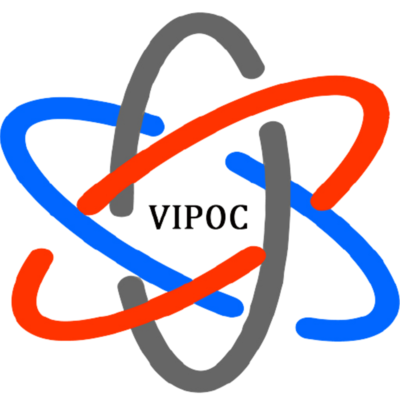
Abstract
Vitiligo is a depigmentation disorder of the skin that occurs secondary to the destruction of melanocytes by an immune-mediated process. Vitiligo clinically presents with depigmented macules and patches, most commonly on the face, acral sites, and genitalia. It can be characterized as generalized or localized based on distribution. The localized form can be further divided into segmental (linear, band-like, or Blaschkoid) and non-segmental vitiligo. The classical treatment of vitiligo includes topical steroids, pulsed oral steroids in unstable vitiligo, phototherapy, a combination of steroid therapy and phototherapy, surgical grafting, as well as intentional depigmentation therapy in severe cases. However, recent advances in understanding the immune mechanisms implicated in the pathogenesis of vitiligo have led to the use of an FDA-approved topical Janus kinase (JAK) inhibitors for vitiligo. Despite this novel therapy advancement, we recommend the addition of narrowband ultraviolet B (NB-UVB) to JAK inhibitors in patients with extensive and progressive lesions, or those not fully responsive to JAK inhibitor monotherapy.
| Investigator | Number Of subjucts | JAK inhibitor dosage and frequency | Study duration | Adjunct therapy | Outcome | Adverse events |
|---|---|---|---|---|---|---|
| Rothstein et al (2017) | 11 | Ruxolitinib 1.5% cream BID | 20 weeks | None | Face: 76% VASI improvement
Non-acral upper extremity: 3.6% VASI improvement Lower extremity/trunk (undefined): 0% VASI improvement |
Erythema
Peripheral hyperpigmentation Transient acne |
| Rothstein et al (2017) | 8 | Ruxolitinib 1.5% cream BID | 32-week extension (52 weeks total) | NB-UVB | Face: 92% VASI improvement
Non-acral upper extremity: 12.6% VASI improvement Trunk: 16.7% VASI improvement |
Erythema Transient acne |
| McKesey et al (2019) | 11 | Tofacitinib 2% cream BID | 8–16 weeks | NB-UVB 3 times weekly | 70% VASI improvement | N/A |
| Rosmarin et al (2020) | 1 | Tofacitinib 2% cream BID | 24 weeks | NB-UVB (3 times weekly, home unit) | Face:100 repigmentation | None |
| Ferreira et al (2021) | 2 | Delgocitinib cream BID | 36 weeks | NB-UVB (3 times weekly) | Face: Significant repigmentation, | Erythema Transient acne |
The psychosocial and cosmetic burden from this chronic autoimmune disease can lead to patients’ isolation. The cost and access of this recent FDA-approved topical JAK inhibitor for non-segmental vitiligo can pose a burden on patients to be compliant and receive appropriate treatment. Adjuvant light exposure treatment can overcome these challenges with effective targeted treatment. Topical JAK inhibitors found their place in the treatment of vitiligo after years of investigation. Prospective clinical trials are needed to further assess adjuvant light therapy and the future formulation of topical JAK inhibitors for the treatment of non-segmental rapidly progressive vitiligo.
References
- 1, , , , . Combination therapy with 308-nm excimer laser, topical tacrolimus, and short-term systemic corticosteroids for segmental vitiligo: a retrospective study of 159 patients. J Am Acad Dermatol. 2015; 73(1): 76– 82. doi:10.1016/j.jaad.2015.04.008
- 2, , , . Vitiligo. Lancet. 2015; 386(9988): 74– 84. doi:10.1016/S0140-6736(14)60763-7
- 3 Kernel Networks Inc. Topical ruxolitinib evaluation in vitiligo study 2 (TRuE-V2). Case Med Res. 2019. doi:10.31525/ct1-nct04057573
- 4, . What is new in narrow-band ultraviolet-B therapy for vitiligo? Indian Dermatol Online J. 2019; 10(3): 234– 243. doi:10.4103/idoj.IDOJ_310_18
- 5, , , , . Repigmentation in vitiligo using the Janus kinase inhibitor tofacitinib may require concomitant light exposure. J Am Acad Dermatol. 2017; 77(4): 675– 682. doi:10.1016/j.jaad.2017.05.043
- 6, . 308nm excimer laser in dermatology. J Lasers Med Sci. 2014; 5(1): 8– 12.
- 7, , . Rapid response of facial vitiligo to 308nm excimer laser and topical calcipotriene. J Clin Aesthet Dermatol. 2011; 4(6): 41– 44.
- 8, , , . Autoimmune Polyendocrinopathy candidiasis ectodermal dystrophy (APECED): a model disease to study molecular aspects of endocrine autoimmunity. Clin Exp Immunol. 2004; 135(3): 348– 357. doi:10.1111/j.1365-2249.2004.02384.x
- 9, , , et al. Ruxolitinib cream for treatment of vitiligo: a randomised, controlled, phase 2 trial. Lancet. 2020; 396(10244): 110– 120. doi:10.1016/S0140-6736(20)30609-7
- 10, . A literature review investigating the use of topical Janus kinase inhibitors for the treatment of vitiligo. J Clin Aesthet Dermatol. 2022; 15(4): 20– 25.
Image source: Envato Elements

 View
View


